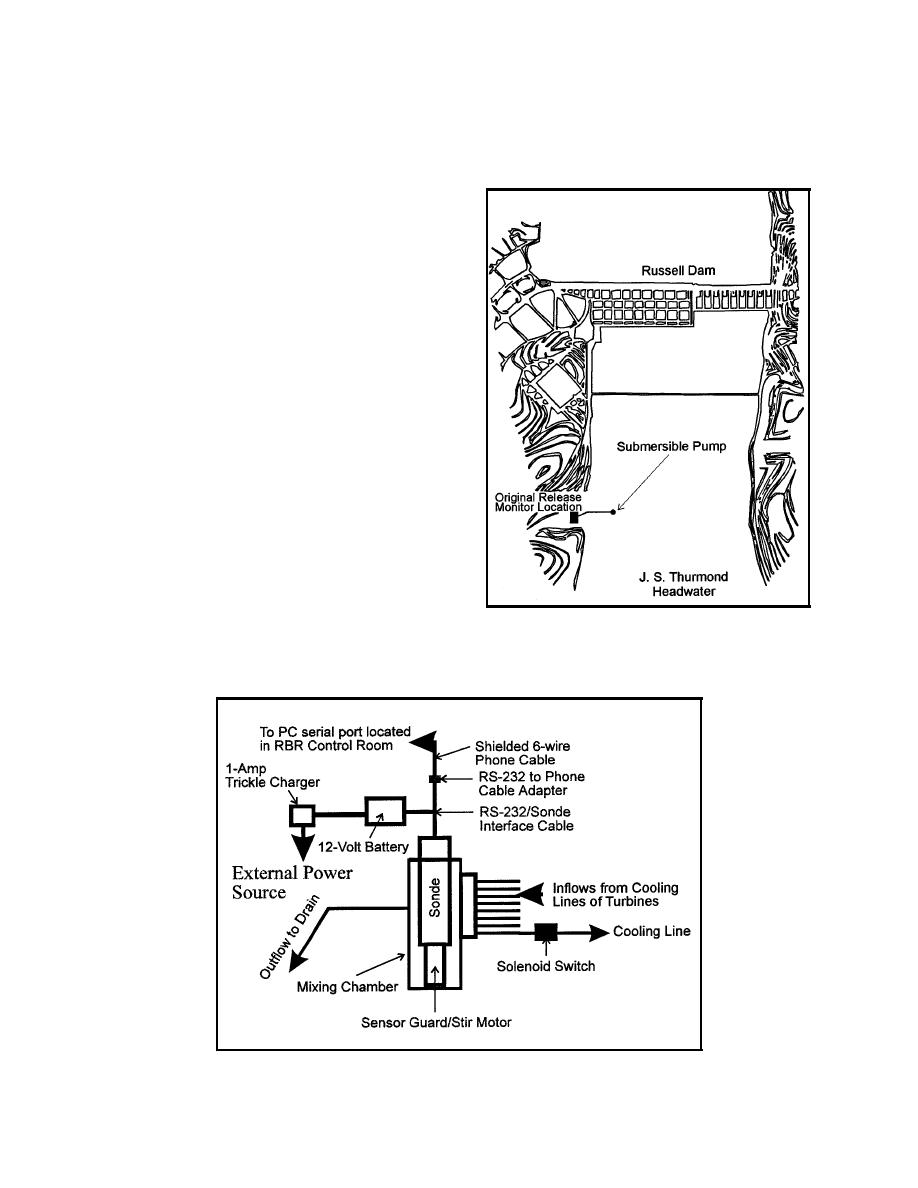
The monitor was originally located in the tailrace, where follow-up studies later demonstrated
that flow patterns caused the monitor to be less reflective of Russell Dam release water than the
ambient tailwater conditions (Figure 7). Temperatures and DO concentrations were measured at
various points in the tailrace and the dam, and
were compared with the temperatures of the
water sampled by the original tailrace monitor.
For comparison, temperature was selected over
DO, since it was a more conservative parameter
and as such was deemed to be less susceptible
to exterior influences (Vorwerk and Carroll
1994).
The lacustrine tailwater region at the Russell
project prevented the deployment of the tailrace
monitors that had been successful for other
Savannah River monitors. A mixing chamber
system containing a water quality sonde was
implemented such that water passage was
controlled by solenoid switches. The switches
were configured to restrict water passage to
periods of turbine operation. This system
(Figure 8) allowed representative water to be
sampled with a single in-dam unit. While the
monitoring goal (to measure release temperatures
and DO concentrations) was the same for the
Savannah River monitors, specific characteristics
unique to each site had to be considered in
Figure 7. Richard B. Russell original downstream
determining where to locate the monitors.
monitor
Figure 8. Richard B. Russell piping gallery monitor
9
Water Quality Technical Note AM-02 (January 1998)



 Previous Page
Previous Page
